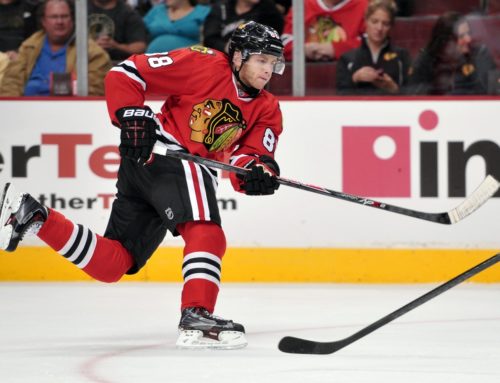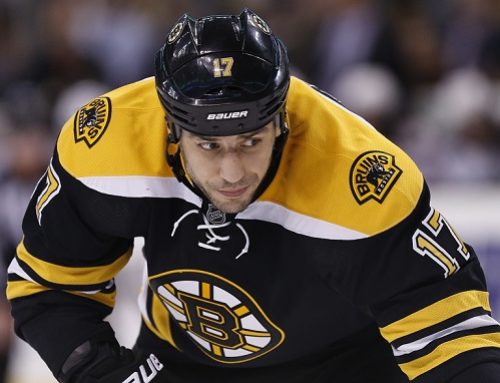
It has been over two weeks since I first mentioned an all-new Goalie Guild feature exclusively for those at DobberHockey. Usually I'm very quick to release these things, but for this particular beastly and intimidating service, I had to take my sweet, sweet time. So after some excruciating hours in front of the computer, along with the close tracking of specific struggling goalies, I'm proud to launch the Fantasy Goalie Flow Chart.
The Goalie Guild's Fantasy Goalie Flow Chart is a simple and effective decision-making tool for your fantasy goaltending needs. My goal is to help you make solid decisions on which goalie to start and which to bench for any given game, goalie and/or situation that might arise over the course of a season. Though the comparison of numerous factors, it's my contention that more often than not, this chart will give you more confidence in making these decisions, while also developing a better understanding of your goalies' strengths and weaknesses.
Over the last two and a half years, I've discussed a plethora of topics that has hopefully given you a clearer understanding of the nature of goaltending. So this flow chart could be considered a massive recap of everything I've presented since I started covering goalies for Dobber back in March of 2007.
There are many factors included in the flow chart, which I explain below. But first and foremost, please realize that this should not be regarded as any type of mathematical algorithm – it's merely a guide. I don't guarantee accuracy and I don't have any equations or months of testing to substantiate what could be positive or negative results. Sometimes this will be effective and sometimes it won't … it's really up to you … and the hands of fate.
The results will therefore vary depending on the goalie in question and the fantasy manager's overall abilities. Obviously every manager will weigh the factors differently, so there's no true or definitive value attached to the individual factors. Some factors are easier to decipher (like records and statistics), while some might take a little more time and effort to gauge (rhythm, confidence and rebound control).
But the ultimate key is to focus on which factors mean the most to you and be confident in the decisions you make. Like many managers often preach on the forums, trust your instincts and don't be afraid to start your elite goalies. You might have a "yes" for nine out of ten positive factors, but a "no" in one negative factor could mean the difference between starting and benching your goalie. It really just depends on the situation.
FLOW CHART GUIDELINES
The first and most important guideline connected to this flow chart is to realize there is no hierarchy attached to the factors. Each one has a different weight that is determined by the individual fantasy manager. I also want to point out that the chart does not help determine which goalie will WIN or LOSE, it determines whether or not a goalie will post beneficial stats (thus worthy of starting him) or negative stats (thus benching him).
Some factors will mean more to a manager than others, so do not place any relevance on the order in which you see each set of factors. Also realize that I have the ability to add more factors as time goes on. Some of you have voiced your opinion on some factors that should be included, all of which are reflected in some way or another on the chart.
Also realize that as time goes on and more of Dobber Nation views and utilizes the chart, I can easily add more factors to this list. If you check this out on our website, you can leave comments and suggestions at the bottom of the chart or you can voice your opinion in the School of Block forums.
THE FACTORS
In order to quickly describe the different factors that make up the flow chart, let's start at the top of the list and work our way down.
One of the most obvious factors in starting a goalie is whether or not they had a shutout in their previous game. It incorporates many different positive dynamics, including a good rhythm, high confidence and a potential winning streak. But remember, there is no guarantee that a goalie with a shutout in their previous game is going to have another positive outing.
Another obvious factor is a winning or a losing streak. Again, this goes back to non-statistical elements like rhythm, confidence and mental toughness. That's 90% of goaltending at the pro level, so I believe this factor should be weighed heavier than others. But realize that all winning streaks come to an end sooner or later, so keep an eye out for all the other factors as well.
Another factor that has really come into focus this season is strong or weak personal records versus former teams or individual teams. For example, Tomas Vokoun has been one of the worst fantasy goalies so far this season. But if you noticed, he had a seven-game winning streak against the Blues heading into Saturday's game. I found this stat just minutes before the game, so I started him and was rewarded with the shutout. It was only his second win of the season. Another example is Martin Biron's 7-2-1 record against his former team, the Sabres. He also pitched a shutout on Saturday, so two goalies with two strong records in these two specific factors resulted in two shutouts. Enough said.
It can be said that goalies and their teams, on average, perform stronger on home ice than they do on the road. That's another simple and effective factor displayed in this chart. Craig Anderson, for example, has only played four home games, but he's perfect at Pepsi Center. On the flip side, Nikolai Khabibulin has yet to win a game on the road this season (0-3-0).
Goalies that are in a good rhythm are much more productive than those that are battling shots, dealing with a lot of mental noise (off-ice distractions or a lack of focus) and things like that. A perfect example is Evgeni Nabokov, who was voted one of the NHL's Three Stars of the Week against Cam Ward, who had a terrible October. You can decipher for yourself how much the team in front of them has to do with the results, but the point is that one is in a rhythm and the other is quite the opposite.
Goalies that are coming off a strong previous game are more likely to continue playing strong as opposed to those goalies that were either pulled, relieved or allowed a couple of weak goals. A confident goalie will also play with more energy and intensity than those that are passive in the net and not reacting to plays efficiently.
Some statistical factors will obviously include the strength of the opposition, along with their current play. If the Avs are getting ready to play the Panthers, odds are strong that you'll want to start Anderson, as opposed to the Blues getting ready to play the Sharks, a game where you might be more inclined to bench Chris Mason.
The rest of the factors have to do more with the team the goalie is facing than their own individual components. Does the other team have a strong power play? Does your goalie have a weak PK save percentage? What about the opposing goalie? Special teams should never be underestimated when it comes to starting or benching a goalie, as momentum can swing heavily when a team scores a PP goal or kills off a couple of penalties.
The lineups for both teams are a factor as well. Does the opposing team have a player that totally dominates your goalie, or is it the other way around? Is a team suffering from an injury to a star player, or did that superstar just get inserted back into the lineup? And finally, similar to the goalie's personal record against certain teams, are there players out there that a goalie totally dominates? For example, Steve Mason has had Alex Ovechkin's number, stopping all 18 shots he's faced against Ovie. That's a factor you'll want to keep an eye on for sure.
In conclusion, I feel that the Fantasy Goalie Flow Chart is an excellent tool and service that can easily be used for fantasy managers of all levels. Whether you spend hours a day on lineup decisions or you only have a few minutes, keep this tool and chart handy and don't be afraid to voice your thoughts and opinions on your results! I am sure, if anything, this will at least act as a great resource for fantasy goaltending for this season.
As always, I created this with the ability to expand, adjust and refine the chart, which is one of the great things about DobberHockey – updates on the fly … and for free!
Check out the flow chart here!





 EDM
EDM FLA
FLA CHI
CHI ANA
ANA CGY
CGY WPG
WPG
